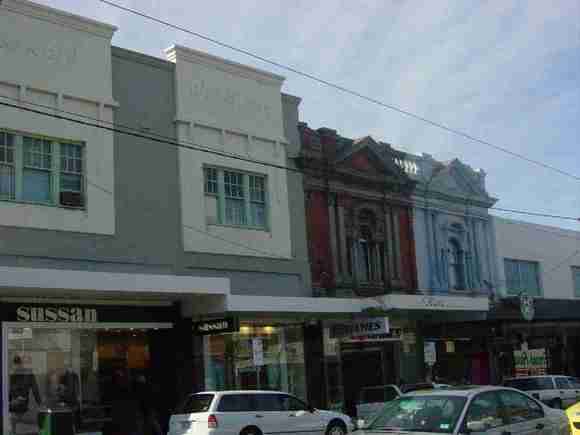| Back to search results » | Back to search page » |
|
Burke Road And Camberwell Junction - Historic Area
Other NameBoundary, West Boundary Or New Cross Road LocationBurke Road,, CAMBERWELL VIC 3124 - Property No B7266
File NumberB7266LevelRegional |
|
Statement of Significance
What is significant? Camberwell Junction was, during the nineteenth century, the commercial, civic and ecclesiastical centre of Camberwell/East Hawthorn. Burke Road was initially the continuation of the line drawn on the west side of Elgar's Special Survey, and later became the boundary between the old Boroondara and Hawthorn Shires, but was not an important commercial strip in the nineteenth century. When the rail line was extended past Hawthorn in 1882 it crossed Burke Road at a level crossing well north of the Junction. The coming of the railway made Camberwell a popular suburb. Commercial development began to occur around the station in the 1880s, and then spread along Burke Road between the Junction and the station, though the junction remained the main commercial centre until well into the twentieth century. Burke Road became a major shopping and commercial strip only in the early twentieth century. Its growth was stimulated by the electric trams that began to run in 1916-7 along Riversdale and Burke Roads, and by the electrification of the train lines in 1916. Burke Road boomed in the 1920s: shop numbers continued to increase even during the Great Depression, and the centre was fully developed by WWII. Throughout this period the shops of Camberwell formed the only large field of local employment. By the 1960s the nature of the shops began to change, reflecting the new wealth and leisure of the population.
Burke Road between the Junction and Victoria Road and Camberwell Junction make up a low to medium rise retail, business, institutional and ecclesiastical centre. The location is enhanced by the topography, with the land falling from Burwood Road down to the Junction, and rising again to the church precinct on Reserve Road. Burke, Camberwell and Riversdale Roads are largely lined with one and two storey late nineteenth and early twentieth century commercial buildings. These are interrupted towards the top of the Burke Road hill by the cutting for the railway line and Camberwell Station. The streetscapes have a strong horizontal form associated with the parapets, balconies and awnings of the Victorian, Edwardian and 1920s and 1930s buildings. The most important buildings along Burke Road include the Davies Building (no 718-22), the shops at nos 708-10 and 831, the former ironmongery at no 694, Kings Building at no 672-4, the Palace Hotel (no 893), the State Savings Bank (no 851), and the early timber shop at no 831. Camberwell Junction is the focus of civic, school and institutional activities in the area. Important buildings at the Junction include the former E S & A Bank (705 Burke Road), Camberwell Primary School No 888 (290 Camberwell Road), the Rivoli Theatre (196-200 Camberwell Road), Our Lady of Victories Church (548 Burke Road), Camberwell Police Station (311-7 Camberwell Road), the Uniting Church and its Manse (300 & 316 Camberwell Road), Simpsons Buildings (222-6 Camberwell Road) and Charing Cross Buildings (202-10) Camberwell Road. The prosperity of the area has resulted in changes to the shopfronts and facades, but some early twentieth century shop fronts remain in Camberwell Road, for example at nos 253 and 373-9).
How is it significant? Burke Road and Camberwell Junction are significant for architectural, historical and social reasons at a Regional level.
Why is it significant? The Burke Road and Camberwell Junction area is architecturally significant as a substantially intact late nineteenth and early twentieth century suburban shopping and institutional area.
The Burke Road and Camberwell Junction area is historically significant as a reflection of the suburban residential and commercial growth that occurred in the 1880s, 1910s and 1920s as a result of the development of the suburban public transport systems. It is one of the largest of the traditional shopping areas of Melbourne, and is unusual for spreading beyond a simple strip into the six streets of the junction, and for incorporating as well a large civic and religious precinct, and a major interwar cinema and large tram depot.
The Burke Road and Camberwell junction area is socially significant as the most important shopping strip for Camberwell residents for more than a hundred years, and an important shopping area for a much wider catchment for much of the twentieth century.
Classified: 27/09/2004
Group
Urban Area
Category
Mixed Use Precinct




